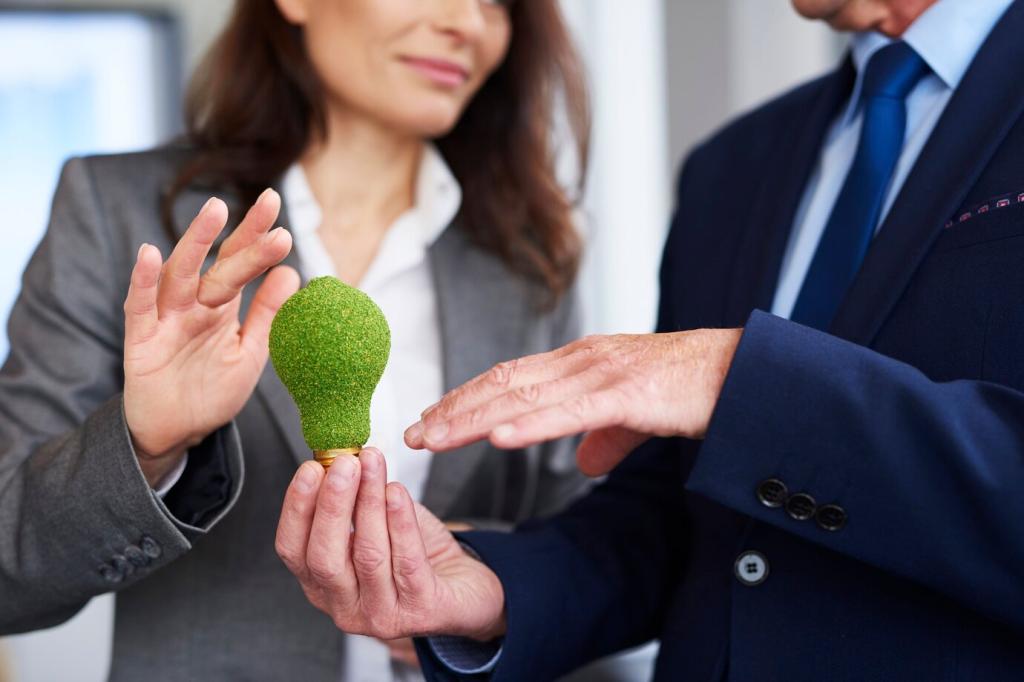Innovations in Smart Home Energy Solutions
Adaptive Learning Algorithms
Adaptive learning algorithms represent a groundbreaking leap in smart home energy management. These algorithms continuously analyze data collected from various sensors and devices throughout the home, such as thermostats, lighting, and appliances. By understanding usage patterns, external factors like weather, and even occupants’ behavior, the system learns to predict energy requirements and adjust settings accordingly. This means that energy is only used when needed, and potential inefficiencies are rapidly identified and corrected, resulting in significant cost savings and reduced environmental footprint over time.
Dynamic Load Balancing
Dynamic load balancing technology enables smart homes to distribute electrical loads intelligently, preventing energy spikes and reducing overall demand on the power grid. This innovation works by monitoring real-time energy consumption across the home and then autonomously adjusting the operation of various devices. For example, high-energy appliances such as washers or electric vehicles may be scheduled to run when energy costs are lowest or when renewable generation is highest. The result is a more stable home energy profile, avoiding costly peak rates and contributing to grid resilience.
Remote Monitoring and Insights
Remote monitoring capabilities empower homeowners to stay informed and in control of their energy consumption from anywhere. Through intuitive apps and online dashboards, users can access real-time data, set preferences, and receive insightful reports on their energy usage patterns. This transparency promotes smarter decision-making, such as identifying high-consumption devices or recognizing opportunities for further optimization. Additionally, these platforms can send proactive alerts when unusual patterns are detected, enabling rapid response to potential issues or inefficiencies.
Next-Generation Home Batteries
Lithium-Ion and Beyond
Lithium-ion batteries have established themselves as the industry standard for home energy storage, offering superior energy density and fast charging capabilities. However, new developments are pushing boundaries with chemistries such as solid-state and flow batteries, promising longer lifespans, enhanced safety, and greater environmental compatibility. These advancements greatly expand the possibilities for residential energy storage, ensuring homeowners have access to more resilient and eco-friendly options that can adapt as energy demands evolve.
Modular Design and Scalability
Innovative modular battery systems are transforming how homeowners approach energy storage. Instead of being tied to a one-size-fits-all solution, users can now add or remove battery modules to meet changing needs, such as installing more storage when adding an electric vehicle or expanding solar capacity. This flexibility makes it easier to future-proof smart homes and manage costs, empowering users to scale their energy systems efficiently as their lifestyles and energy consumption change.
Intelligent Energy Dispatch
Intelligent dispatch systems are revolutionizing how stored energy is used within the smart home ecosystem. These systems analyze real-time data, energy prices, weather forecasts, and consumption patterns to determine the optimal times to charge, discharge, or even sell excess energy back to the grid. The result is that batteries can function not just as backup sources, but as active participants in a home’s overall energy strategy, maximizing savings and supporting broader sustainable energy goals.

Seamless Solar Panel Integration
The latest smart energy systems allow solar panels to become an intelligent part of the home’s energy infrastructure. Advanced inverters and monitoring tools ensure that every watt generated is efficiently stored, used, or exported, maximizing self-consumption and minimizing reliance on utility-supplied electricity. Real-time data flows between the panels, home devices, and storage systems, enabling on-the-fly adjustments that optimize generation and consumption for cost-effectiveness and sustainability.

Vehicle-to-Grid Technology
Electric vehicles (EVs) are now becoming active components of the smart home energy ecosystem, thanks in part to vehicle-to-grid (V2G) technology. V2G allows EV batteries to discharge energy back into the home or the grid during peak times, essentially turning the car into a mobile energy storage system. Intelligent charging stations manage when and how much energy to draw or return, ensuring the vehicle is sufficiently charged for travel while maximizing cost savings and supporting grid stabilization efforts in the local community.
Personalized Automation and Custom Experiences
Context-aware automation allows smart home energy systems to make decisions based on a wide range of contextual factors, such as time of day, weather, occupancy, and even upcoming calendar events. For example, the heating system might pre-warm the home on a cold morning before the family rises, or appliances could automatically enter eco-mode when no one is present. These features ensure energy is always used optimally without sacrificing convenience or comfort.
Previous
Next
Energy-Efficient Smart Appliances
Sensor-Driven Performance Optimization
Modern smart appliances are equipped with a range of sensors that detect everything from humidity and temperature to clothing fabric types and food freshness. These sensors enable appliances like washing machines, refrigerators, and ovens to adjust their operation—such as cycle duration, temperature settings, or power modes—dynamically. This ensures that appliances use only the minimum necessary energy and deliver optimal results with no manual intervention required.

Enhanced Home Energy Security

Cybersecurity in Connected Devices
As smart home devices become more interconnected, they also become potential targets for cyber threats. Leading manufacturers are responding with robust encryption protocols, secure device onboarding, and vigilant patch management. These measures help safeguard sensitive data, prevent unauthorized access, and ensure that only trusted commands are executed within the energy management ecosystem. Continuous monitoring and threat detection systems further fortify these defenses, providing homeowners with confidence in their smart technology investment.

Backup Power and Outage Management
Smart home energy solutions are increasingly equipped with mechanisms to provide reliable backup power during outages. Integration with home batteries, standby generators, or even solar panels ensures critical systems remain operational in emergencies. Automated switchover protocols and outage alerts allow for a rapid, seamless transition to backup sources, minimizing disruption and protecting essential appliances and security systems until normal service is restored.

Tamper Detection and System Integrity
Maintaining the physical integrity of smart home energy systems is crucial for both safety and performance. Innovations in tamper detection utilize advanced sensors and analytics to monitor for unauthorized access or potential sabotage at the device and system level. When breaches or anomalies are detected, homeowners receive immediate alerts, and systems can automatically enter safe modes or engage security protocols, ensuring ongoing protection for both occupants and property.
Real-Time Usage Forecasting
Sophisticated predictive models can analyze structured and unstructured data inputs from across the smart home to forecast energy demand and costs in real time. These models take into account variables such as weather patterns, occupancy trends, historical usage data, and even upcoming events. Armed with these forecasts, systems can automatically adjust schedules or suggest manual interventions to align consumption with the most cost-effective and sustainable strategies.
Equipment Performance Prediction
Machine learning algorithms are employed to track the performance trends of key energy-consuming devices and systems. By analyzing patterns and anomalies, the system can predict when equipment may be nearing suboptimal operation or is likely to require maintenance. This enables preemptive action—such as scheduling repairs, cleaning filters, or replacing parts—ahead of failures, minimizing downtime and further optimizing energy usage throughout the home.
